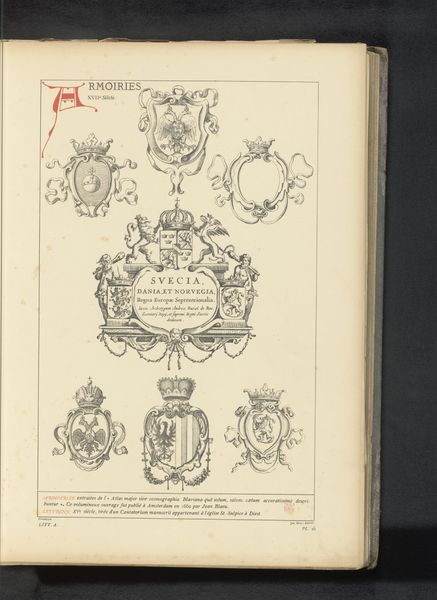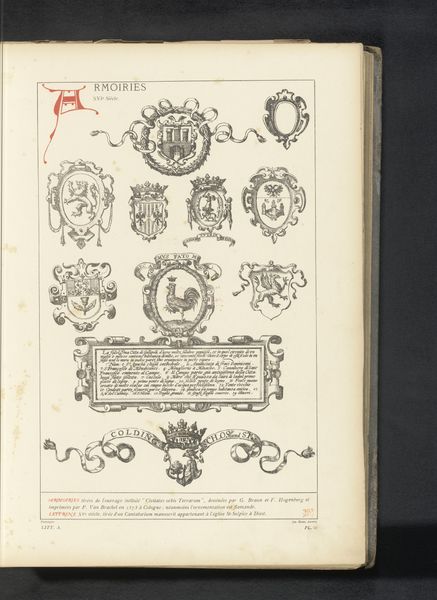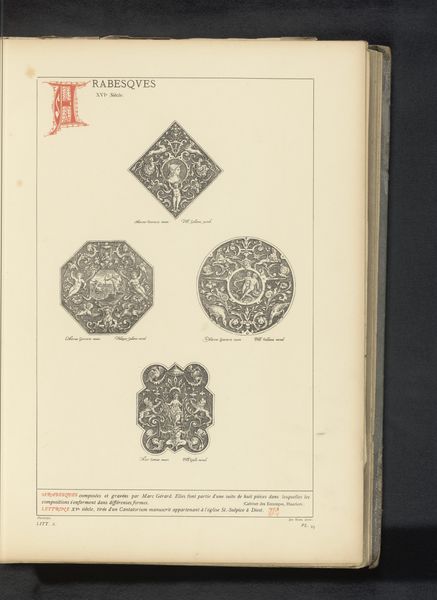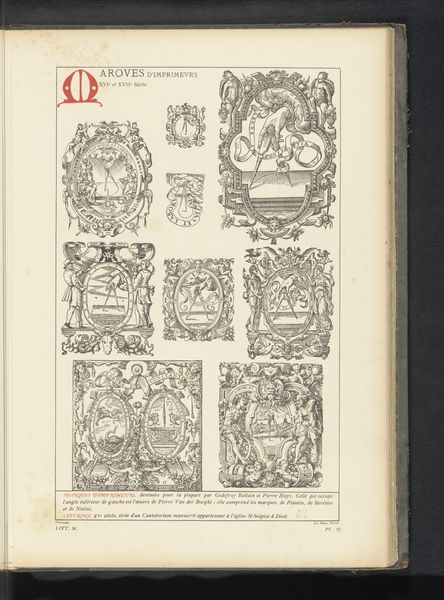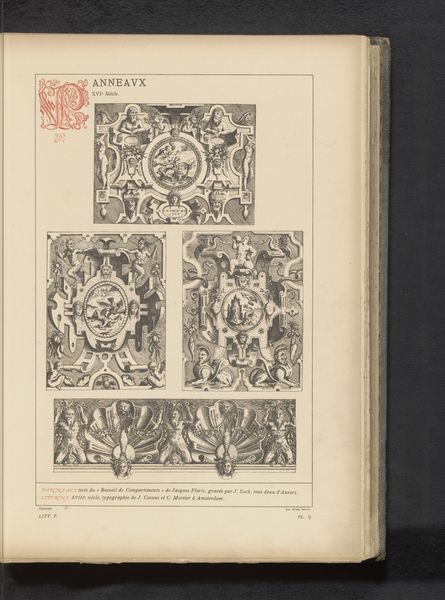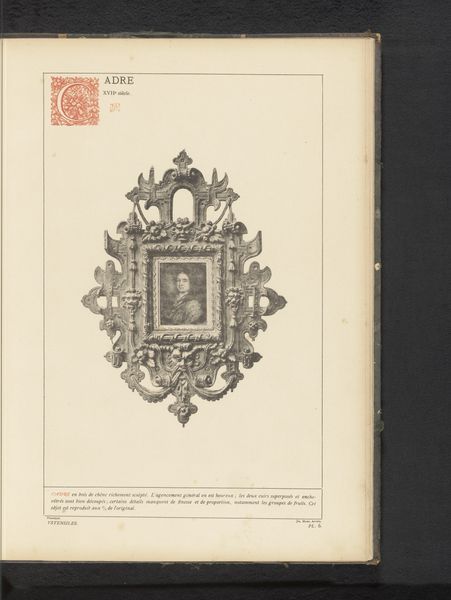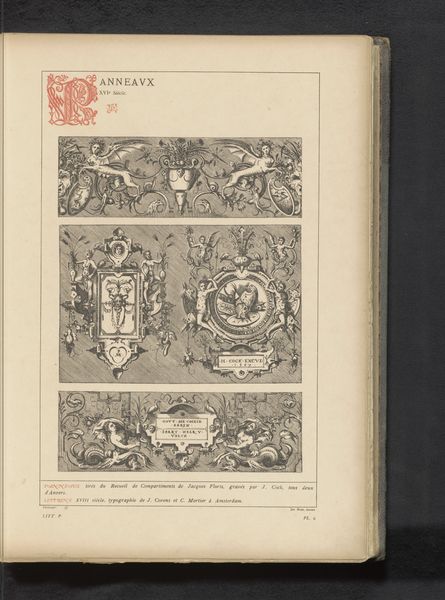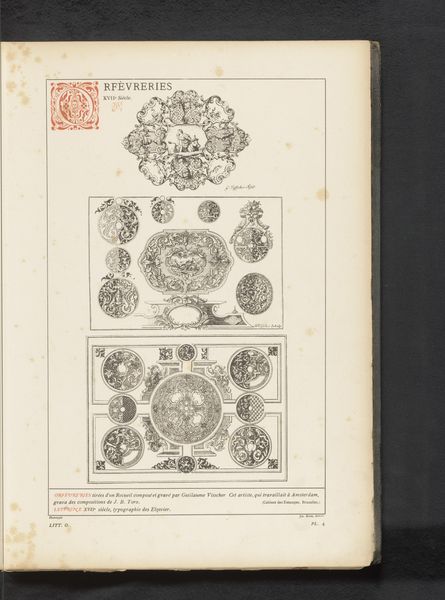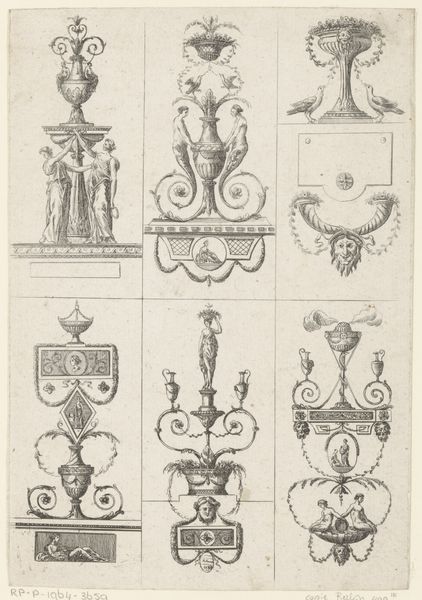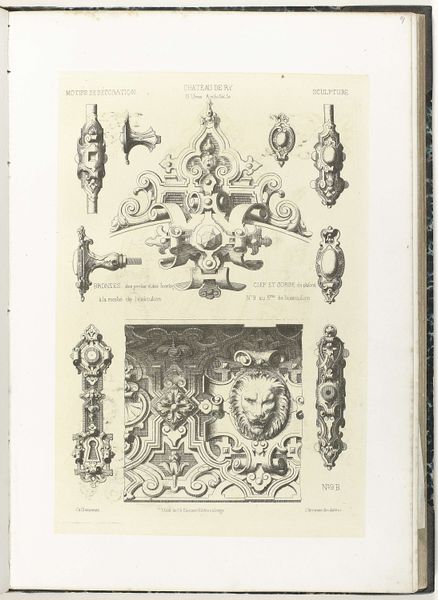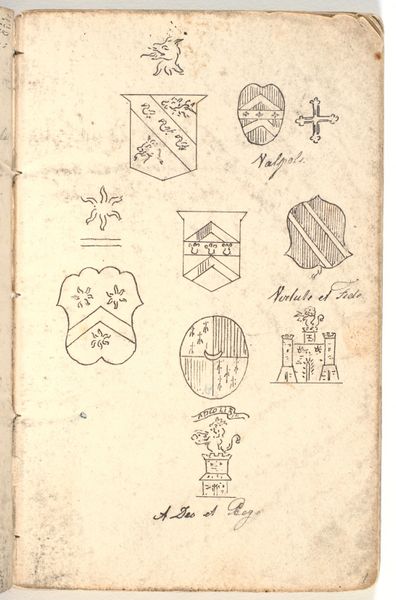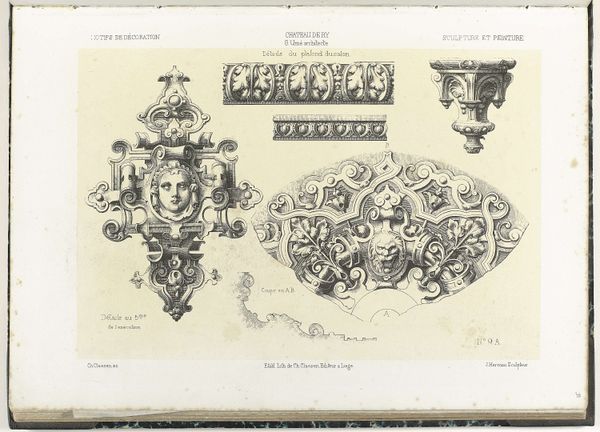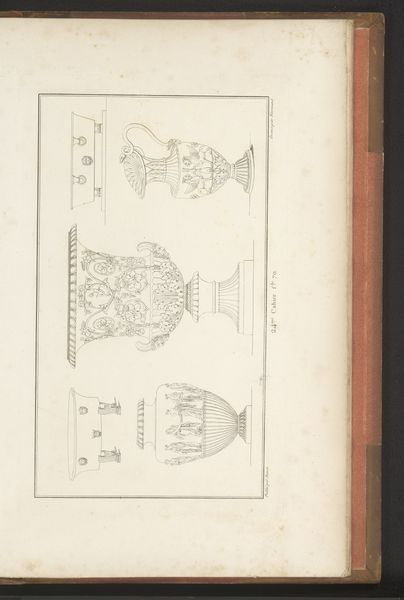
Reproductie van een ontwerp met elf wapenschilden door Georg Braun en Frans Hogenberg before 1880
0:00
0:00
graphic-art, print, engraving
#
graphic-art
#
medieval
# print
#
form
#
11_renaissance
#
geometric
#
line
#
history-painting
#
engraving
Dimensions: height 344 mm, width 232 mm
Copyright: Rijks Museum: Open Domain
Curator: Let’s take a look at this print, "Reproductie van een ontwerp met elf wapenschilden door Georg Braun en Frans Hogenberg," made before 1880. What's your initial read of this work? Editor: Stark and declarative. These emblems, rendered in such precise lines, give me a sense of formality but also restriction. There's a real discipline in the arrangement and each individual symbol looks regimented by the demands of its form. I am intrigued by how it was printed - that hatching is incredible! Curator: It's interesting you say "restriction". Heraldry itself, especially during the Renaissance period when these symbols likely gained prominence, was all about defining and confining identity. These shields use potent images - lions, eagles, crosses – all signifying specific lineages, values and territories. Each symbol is a condensed narrative. Editor: So it’s more about condensing than expressing? I see the visual weight each carries. That begs the question of labor. Think of the physical act of engraving those intricate designs, transferring them to paper - the resources and the social systems that supported its production are interesting to unpack. Curator: Precisely! Consider that some symbols repeat, or are positioned centrally, indicating perhaps hierarchical relationships or the convergence of certain houses. Even that stylized fleur-de-lis carries immense cultural baggage, its symbolism evolving drastically through French history and into modern culture. How images change meanings fascinates me! Editor: Indeed! The means of production are key to unpacking it, and would dictate accessibility as well - what does a printed broadside offer that a unique hand-painted one can't, aside from relative reproducibility and therefore a democratisation of its availability? It looks printed and mass-produced, but still a great visual source of Medieval form. Curator: Exactly. Thinking about that tension is helpful here: These images speak of a desire for lineage and legacy through printed impressions destined to spread further than hand-painted equivalents ever could. What do you make of the overall effect? Editor: I keep thinking of access. It almost neutralizes these dynastic displays somewhat, democratising access to something inherently exclusionary - this seems almost revolutionary. A really fascinating artifact when seen in its material and printing context! Curator: A paradox captured perfectly. Looking through your perspective has shifted my understanding once again! The interplay between image and its reproductive context brings the conversation to such nuanced heights.
Comments
No comments
Be the first to comment and join the conversation on the ultimate creative platform.
